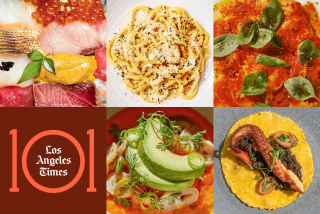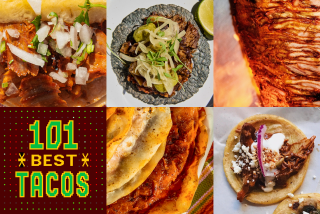âSuperfoodâ trend combines fresh foods, common-sense choices
Practically every celebrity, TV show and magazine related to food or health has come out with a list of âsuperfoodsâ we all should be eating. These lists began to appear a few years ago, highlighting common foods that pack a nutritional punch, like sweet potatoes and blueberries. Now, weâre told we should be buying things like beet juice, acai berries, kale, quinoa, and chia seeds.
Do we really need to scour specialty grocery stores for these so-called superfoods â and pay top dollar â in order to eat healthfully? How do we know which superfoods we need?
What are they?
When discussing superfoods, it is important to realize it is a non-medical marketing term invented to refer to foods that have health-promoting properties, according to www.medicinenet.com. It explains that superfoods typically have unusually high content of antioxidants, vitamins or other nutrients. They are often those foods that have been proven to reduce the risk of developing certain diseases, such as heart disease. Many natural foods could be given this moniker; there is no set list.
However, superfoods and their benefits are real, says Joan Salge Blake, a registered dietitian, Boston University clinical associate professor, and spokeswoman for the Academy of Nutrition and Dietetics (formerly the American Dietetic Association).
Confusion exists because various âexpertsâ place different foods on their lists. And marketing companies and celebrities continuously hawk the next trendy food.
What nutrition professionals consider a superfood may pleasantly surprise you. In fact, you likely have superfoods hiding in your cupboard or refrigerator now. Thatâs because people like Blake consider superfoods to be natural foods like fresh produce, nuts and whole grains.
âAll produce is good for you. To ask which one is the best and brightest is like asking a mother which one of her kids she loves the most,â Blake says.
Blake is in favor of introducing new healthy foods to the public, such as chia seeds, which are in fact seeds of the plant grown on those ubiquitous Chia Pets. The seeds contain healthy omega-3 fatty acids, carbohydrates, protein, fiber, antioxidants, and calcium. âBut you donât need them to ensure that your diet is healthy,âBlake says. âItâs a total diet that brings you health, not one nutrient.â
Her advice is to think retro when shopping for fresh food items.
âGo back to the foods that your mom and dad gave you growing up, like peanuts for vitamin E, eggs for quality protein, baked potatoes for potassium,â she says. âFor price and quality, buy what is in season, such as apples, oranges, peaches, grapes. They are jam-packed with nutrition at an affordable price. You donât need to go out of your way to get these foods at very select markets and pay a lot for them.â
Not a bad trend
Ultimately, Blake thinks the superfood trend is mostly OK, because it is exposing Americans to new, healthier food options, particularly older folks raised on meat and potatoes.
Several years ago, Brookdale Senior Living â which has won awards for its dining program â developed its own list of 20 superfoods. The list contains many traditional foods seniors know, and a few they may be less used to such as pomegranate seeds, dark chocolate, or even yogurt.
At the same time, Brookdale developed a list of 20 pamphlets for residents to read about the benefits of each of these superfoods, while working them into their everyday menus.
The Brookdale list includes: almonds, avocados, barley, black beans, blueberries, bok choy, broccoli, dark chocolate, coffee, fatty fishes, garlic, lentils, olive oil, onions, oranges, pomegranates, spinach, sweet potatoes, whole grains, and yogurt.
âSome years ago, the food in much of the senior living industry was very much comfort food â meatloaf, potatoes, etc.,â says Joska Hajdu, senior vice president for dining services. âThat has changed drastically in the past 10 years, and especially in the past few years, with a younger generation of seniors. Now there is a general desire to eat healthy and have the menus loaded wth superfoods.â
Hajdu says it can be a challenge to keep menus interesting for folks who eat in the same dining room year round. Brookdale does what restaurants do: use plenty of of fresh, seasonal ingredients.
âIt fits with our motto: âEating well means living well.ââ
- By Lisa Jevens for Primetime
More to Read
Eat your way across L.A.
Get our weekly Tasting Notes newsletter for reviews, news and more.
You may occasionally receive promotional content from the Los Angeles Times.










